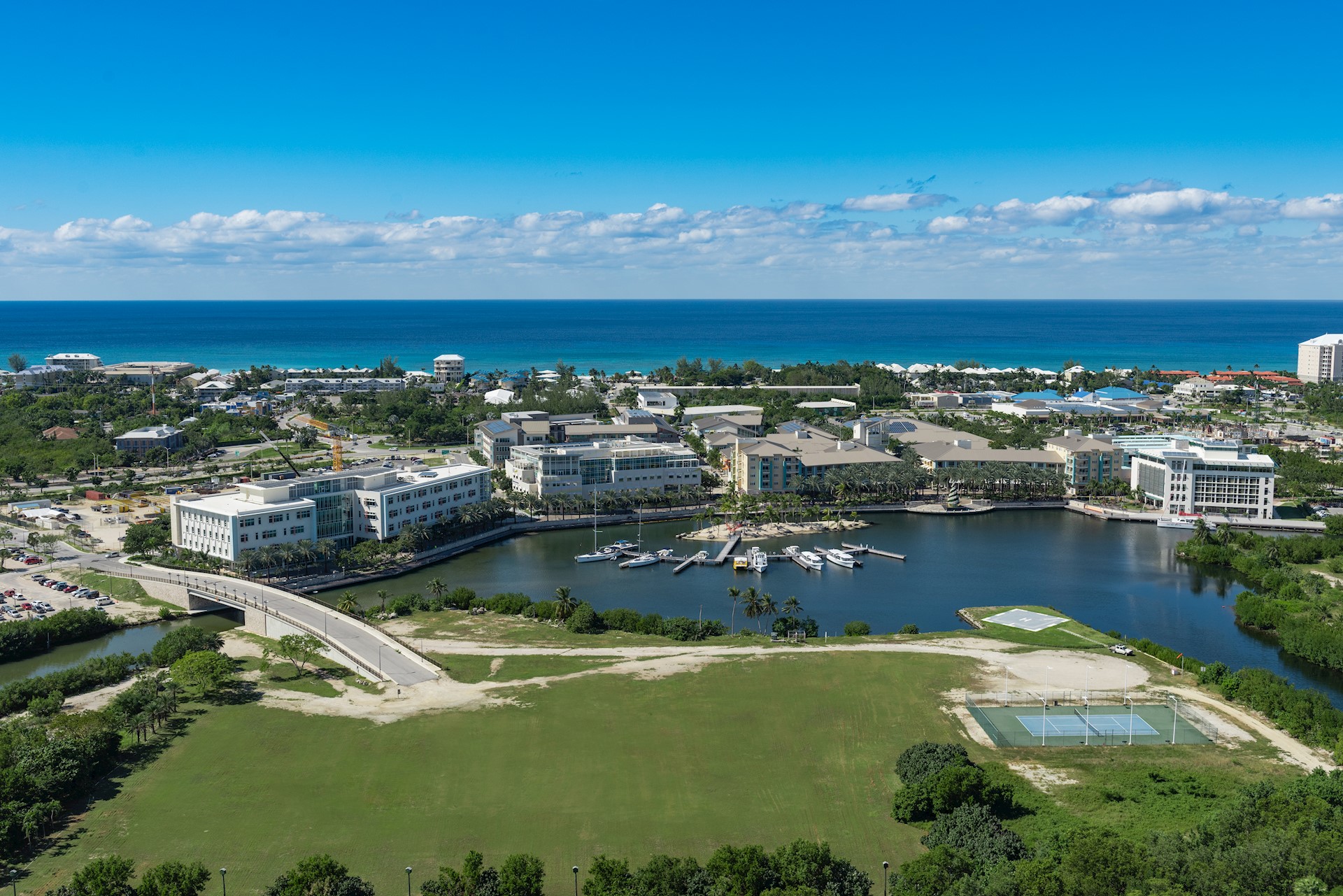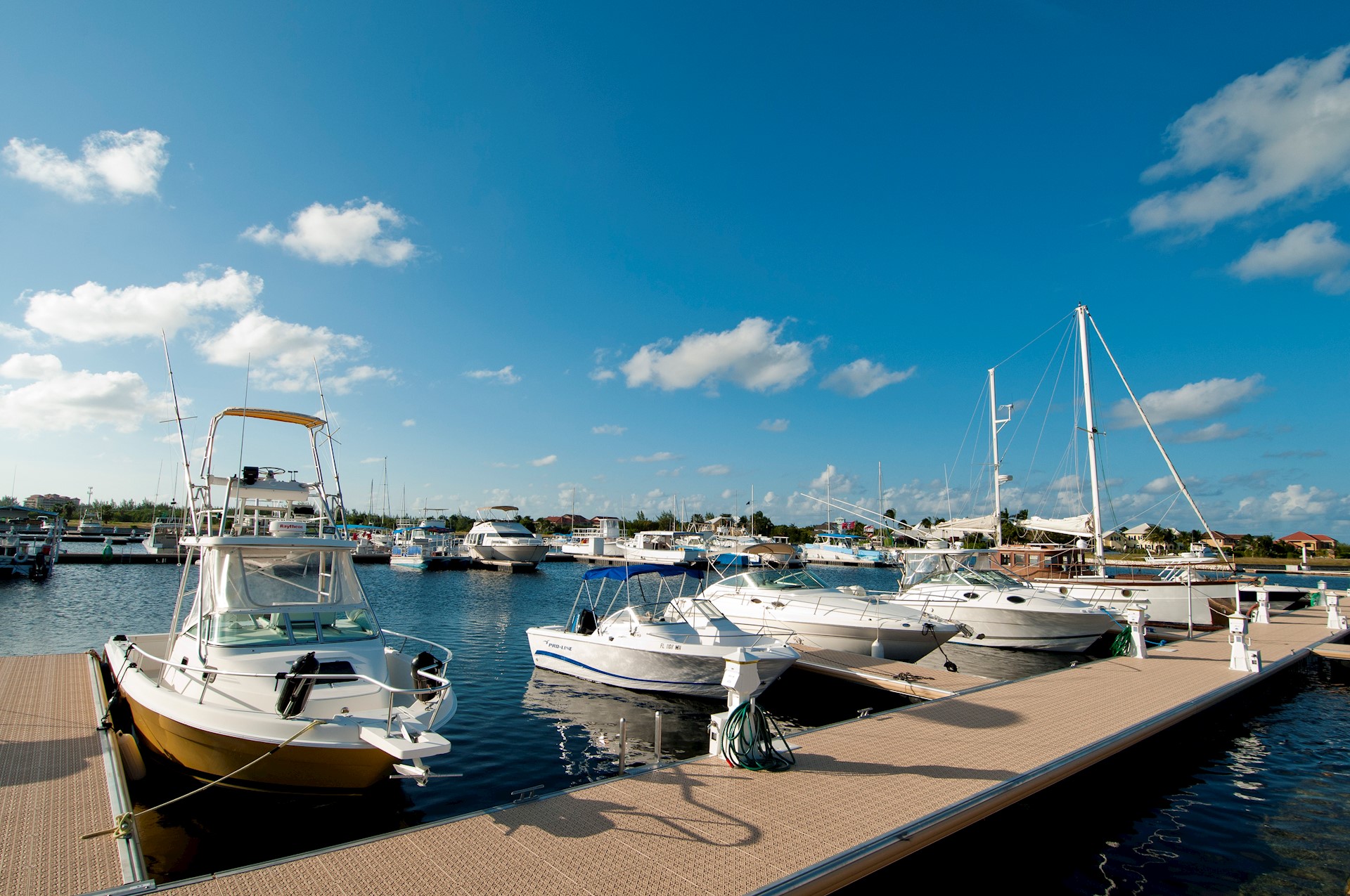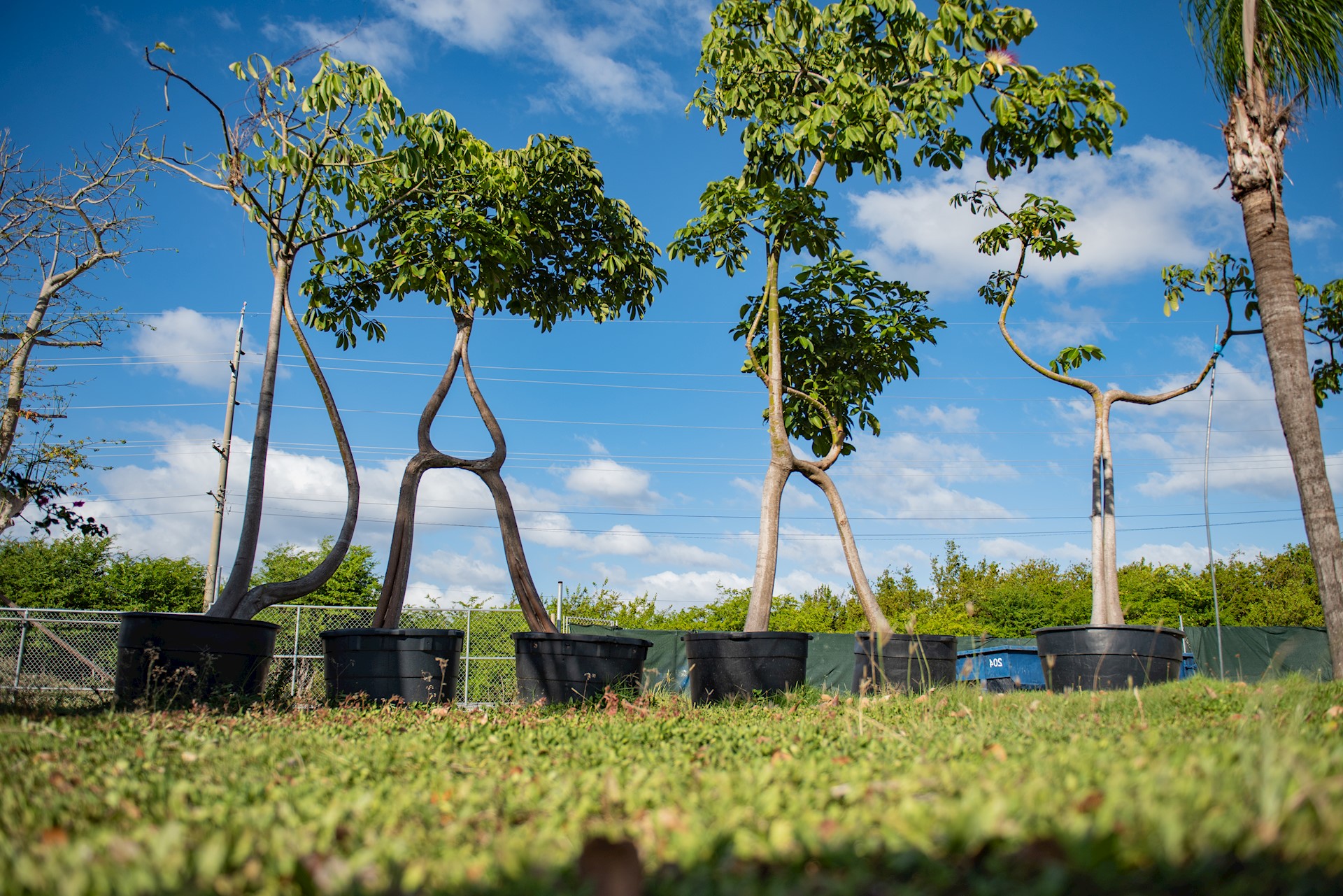
“Despite the fallout of the COVID-19 pandemic, it has not changed our perspective on the Cayman Islands. We continue to be positive, optimistic and hold a long-term view about Cayman’s future.”
Chief Executive Officer Mark VanDevelde says Dart’s commitment to the Cayman Islands remains strong. That is why, during challenging times, like the present one created by the COVID-19 pandemic, the company is moving ahead with a new master-planned community, continuing its legacy of stimulating the economy during difficult times; and creating thoughtful, well-designed neighbourhoods where people gather to live, work, play and enjoy an island lifestyle.
The company has submitted a planning application for a Planned Area Development — often referred to as a PAD — west of the Cayman Islands Yacht Club to create what VanDevelde calls a “mixed-use resort and residential neighbourhood,” that envisions a framework for hospitality, retail, entertainment, and residential elements connected through a network of roads, pedestrian paths, bicycle trails and waterways.
The PAD application focuses on land between Governor’s Harbour and Salt Creek roundabouts, spanning both sides of the Esterley Tibbetts Highway. Connecting to the established residential areas of Salt Creek, Yacht Club, Vista Del Mar, and Governor’s Harbour, the proposed neighbourhood will be anchored by Kimpton Seafire Resort + Spa on the west and the Cayman Islands Yacht Club and Marina to the east.
“Like our flagship development at Camana Bay begun more than 20 years ago, our design process is being guided by a world-class team of professionals who bring broad and diverse expertise — a commitment to thoughtful place-making, quality construction and flexibility to adapt over time,” says VanDevelde.
“The design of a PAD requires a more comprehensive approach including consideration of adjacent uses, accessibility, public spaces and community amenities,” he says. “The resulting vision gives people comfort and reduces uncertainty, while still providing flexibility to evolve with changing conditions.”
The planned neighbourhood includes the new Hotel Indigo and a splash park for young children that will be at the Kimpton Seafire Resort + Spa. “Our plans for Indigo have been in the works for a few years,” says VanDevelde. “Post-COVID, we believe there will be pent-up demand for this type of accommodation, catering to business visitors and families traveling on holiday.”

Land stewardship
For VanDevelde, a PAD lends itself to effective land stewardship as a master-planned area requires an outlined structure for the land use. He points to government’s PAD legislation and the more recent Plan Cayman development process which encourages this kind of strategic thinking and forward planning.
“With the level of consideration that goes into master-planning, there is an opportunity to take an integrated approach considering a wide variety of factors, for example: transportation, demographics, differing target markets, and then design products, services and experiences accordingly,” he says. “It also forces you to think about how a proposed development fits into the broader Cayman community."
Acknowledging there are some who are concerned about overdevelopment and the environmental risks associated with it, VanDevelde would like to see the creation of an environment management framework. In combination with a national development plan and the National Conservation Law, VanDevelde believes an environment management framework would help balance the country's environmental, social and economic interests by providing landowners a clearer roadmap for sustainable development.
“On one end of the spectrum, there are lands and habitats which are highly sensitive and of significant environmental importance that absolutely need to be protected, and on the other end of the spectrum, there are lands that, if developed, have the opportunity to provide the greatest economic benefits to the country. In the middle of the spectrum, where the value is not as clearly defined, having such a framework would be invaluable to guide decision-making,” he says.
“A comprehensive environment management framework informed by all stakeholders, that reflects a shared vision for the future, would provide clear guidance on how land can be developed, managed or protected and give much-needed certainty to both conservation groups and land-owners," says VanDevelde. "The lack of clarity leads to uncertainty and creates an unnecessary polarisation in the community.”
VanDevelde says Dart has always thoughtfully considered how to incorporate Cayman’s natural environment in its development plans, as evidenced with its first projects like Dart Parks, the Dart Nursery and Camana Bay.
“It’s no coincidence that the first thing we did was build a nursery 25 years ago,” he says. “It’s also no coincidence that the promise of Camana Bay is ‘Life Blossoms’ and the mark is a blooming flower. We plant indigenous and native species throughout all of our developments, which in turn preserves and cultivates new habitats for flora and fauna like birds and butterflies. We use landscape architecture to provide accessibility, facilitate energy management and create welcoming outdoor spaces. It is part of our DNA and has been in practice all those years, and is one of which we are proud.”
“Despite the fallout of the COVID-19 pandemic, it has not changed our perspective on the Cayman Islands. We continue to be positive, optimistic and hold a long-term view about Cayman’s future.”
Chief Executive Officer Mark VanDevelde says Dart’s commitment to the Cayman Islands remains strong. That is why, during challenging times, like the present one created by the COVID-19 pandemic, the company is moving ahead with a new master-planned community, continuing its legacy of stimulating the economy during difficult times; and creating thoughtful, well-designed neighbourhoods where people gather to live, work, play and enjoy an island lifestyle.
The company has submitted a planning application for a Planned Area Development — often referred to as a PAD — west of the Cayman Islands Yacht Club to create what VanDevelde calls a “mixed-use resort and residential neighbourhood,” that envisions a framework for hospitality, retail, entertainment, and residential elements connected through a network of roads, pedestrian paths, bicycle trails and waterways.
The PAD application focuses on land between Governor’s Harbour and Salt Creek roundabouts, spanning both sides of the Esterley Tibbetts Highway. Connecting to the established residential areas of Salt Creek, Yacht Club, Vista Del Mar, and Governor’s Harbour, the proposed neighbourhood will be anchored by Kimpton Seafire Resort + Spa on the west and the Cayman Islands Yacht Club and Marina to the east.
“Like our flagship development at Camana Bay begun more than 20 years ago, our design process is being guided by a world-class team of professionals who bring broad and diverse expertise — a commitment to thoughtful place-making, quality construction and flexibility to adapt over time,” says VanDevelde.
“The design of a PAD requires a more comprehensive approach including consideration of adjacent uses, accessibility, public spaces and community amenities,” he says. “The resulting vision gives people comfort and reduces uncertainty, while still providing flexibility to evolve with changing conditions.”
The planned neighbourhood includes the new Hotel Indigo and a splash park for young children that will be at the Kimpton Seafire Resort + Spa. “Our plans for Indigo have been in the works for a few years,” says VanDevelde. “Post-COVID, we believe there will be pent-up demand for this type of accommodation, catering to business visitors and families traveling on holiday.”

Land stewardship
For VanDevelde, a PAD lends itself to effective land stewardship as a master-planned area requires an outlined structure for the land use. He points to government’s PAD legislation and the more recent Plan Cayman development process which encourages this kind of strategic thinking and forward planning.
“With the level of consideration that goes into master-planning, there is an opportunity to take an integrated approach considering a wide variety of factors, for example: transportation, demographics, differing target markets, and then design products, services and experiences accordingly,” he says. “It also forces you to think about how a proposed development fits into the broader Cayman community."
Acknowledging there are some who are concerned about overdevelopment and the environmental risks associated with it, VanDevelde would like to see the creation of an environment management framework. In combination with a national development plan and the National Conservation Law, VanDevelde believes an environment management framework would help balance the country's environmental, social and economic interests by providing landowners a clearer roadmap for sustainable development.
“On one end of the spectrum, there are lands and habitats which are highly sensitive and of significant environmental importance that absolutely need to be protected, and on the other end of the spectrum, there are lands that, if developed, have the opportunity to provide the greatest economic benefits to the country. In the middle of the spectrum, where the value is not as clearly defined, having such a framework would be invaluable to guide decision-making,” he says.
“A comprehensive environment management framework informed by all stakeholders, that reflects a shared vision for the future, would provide clear guidance on how land can be developed, managed or protected and give much-needed certainty to both conservation groups and land-owners," says VanDevelde. "The lack of clarity leads to uncertainty and creates an unnecessary polarisation in the community.”
VanDevelde says Dart has always thoughtfully considered how to incorporate Cayman’s natural environment in its development plans, as evidenced with its first projects like Dart Parks, the Dart Nursery and Camana Bay.
“It’s no coincidence that the first thing we did was build a nursery 25 years ago,” he says. “It’s also no coincidence that the promise of Camana Bay is ‘Life Blossoms’ and the mark is a blooming flower. We plant indigenous and native species throughout all of our developments, which in turn preserves and cultivates new habitats for flora and fauna like birds and butterflies. We use landscape architecture to provide accessibility, facilitate energy management and create welcoming outdoor spaces. It is part of our DNA and has been in practice all those years, and is one of which we are proud.”

Focus on the Future
While the rest of the world grapples with the COVID-19 virus, VanDevelde gives credit to the Cayman Islands government and the wider community for putting the jurisdiction in an enviable position as it relates to human health and safety.
“The Cayman Islands has done an incredible job of keeping the country and its people safe from this global pandemic,” he says. “As such, it is well-positioned for future success.”
Most agree COVID-19 created a pivotal pause, a moment that Dart sees as providing opportunities.
“Like most businesses, we have been negatively impacted by the financial implications of the pandemic,” he says. “However, we have the benefit of having a long-term perspective and the wherewithal to see it through. It is at times like now the spotlight is shone on these two features — features which allow us to move forward with our plans while helping the wider community wherever we can.”
Dart is also taking the opportunity to do an extensive refurbishment of The Ritz-Carlton, Grand Cayman and a complete overhaul of the new Hampton by Hilton, formerly operated as Comfort Suites, so that both properties are ready for stay-over visitors when they return.
“At Camana Bay, we have several projects already underway: our newest commercial building 60 Nexus Way and OLEA, our for-sale residential joint venture with NCB; and Kapok, our for-lease, residential project,” VanDevelde says. “It’s investment activities like these that can lessen the negative impact on local business during an economic downturn.”
Simultaneously, VanDevelde says the success that springs from sustainable development lends itself to create opportunities for further development of the workforce. Dart has several educational and workforce development initiatives, like the Dart Scholar’s programme, Minds Inspired and Work-X.
“I only have to look outside my office door to see some of the brightest young talent coming up through the Cayman Islands workforce and it truly makes me happy to see them gain meaningful experience through a programme like Work-X,” he says.
VanDevelde believes continued collaboration between the public and private sectors, along with the wider community, will create additional opportunities for a shared prosperity.
“In the midst of a pandemic, these small islands have punched well above their weight and proved their mettle in the face of adversity. At Dart, we are enthusiastic and optimistic about the future of the Cayman Islands."
--------
This article first appeared in print in the February 2021 edition of Camana Bay Times, written by Tammi Sulliman.
In other news